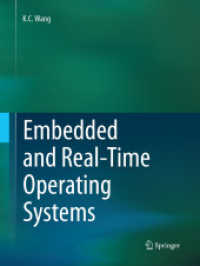- ホーム
- > 洋書
- > 英文書
- > Literary Criticism
Full Description
Classical Greek Tragedy offers a comprehensive survey of the development of classical Greek tragedy combined with close readings of exemplary texts. Reconstructing how audiences in fifth-century BCE Athens created meaning from the performance of tragedy at the dramatic festivals sponsored by the city-state and its wealthiest citizens, it considers the context of Athenian political and legal structures, gender ideology, religious beliefs, and other social forces that contributed to spectators' reception of the drama. In doing so it focuses on the relationship between performers and watchers, not only Athenian male citizens, but also women and audiences throughout the ancient Mediterranean world.
This book traces the historical development of these dynamics through three representative tragedies that span a 50 year period: Aeschylus' Seven Against Thebes, Sophocles' Oedipus Tyrannus, and Euripides' Helen. Topics include the role of the chorus; the tragic hero; recurring mythical characters and subject matter; Aristotelian assessments of the components of tragedy; developments in the architecture of the theater and their impact on the interactions of characters, and the spaces they occupy. Unifying these discussions is the observation that the genre articulates a reality beyond the visible stage action that intersects with the characters' existence in the present moment and resonates with the audience's religious beliefs and collective psychology. Human voices within the performance space articulate powerful forces from an invisible dimension that are activated by oaths, hymns, curses and prayers, and respond in the form of oracles and prophecies, forms of discourse which were profoundly meaningful to those who watched the original productions of tragedy.
Contents
List of Illustrations
Series Preface
Chapter One: Early Tragedy
Chapter Two: The Mature Period
Chapter Three: Late Tragedy
Notes
References
Index







